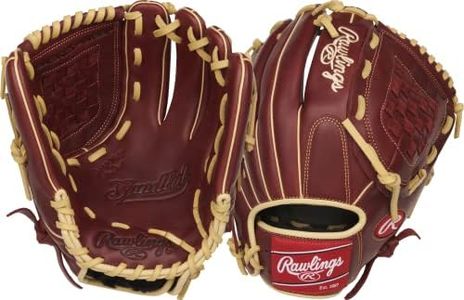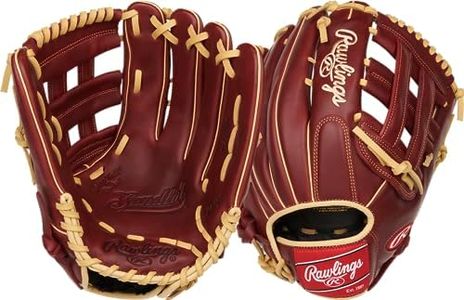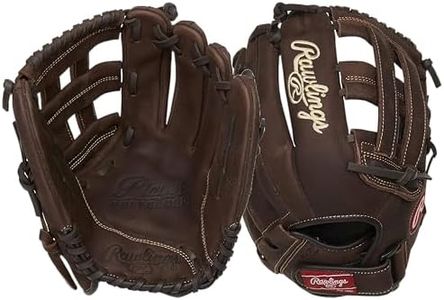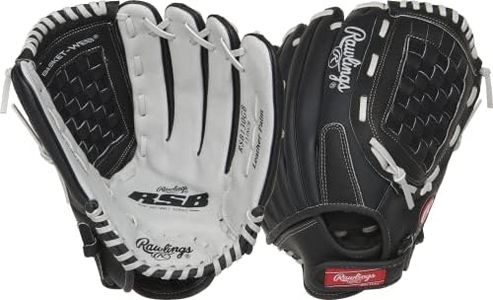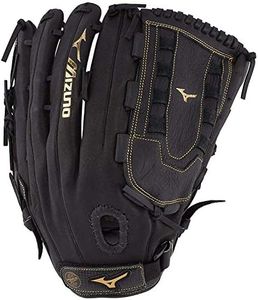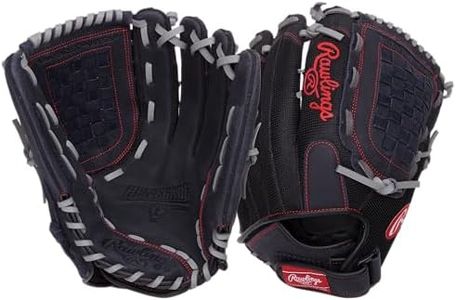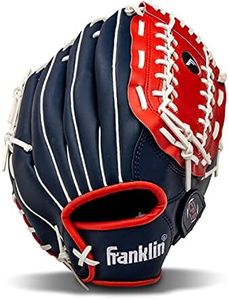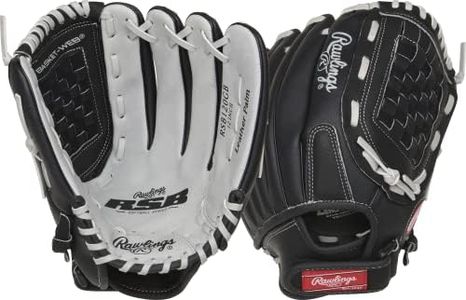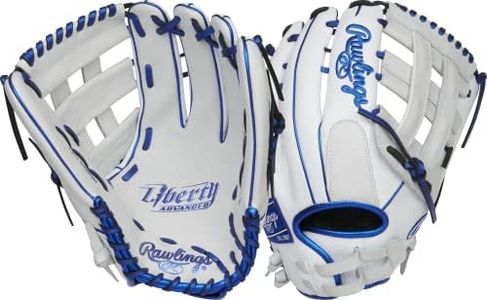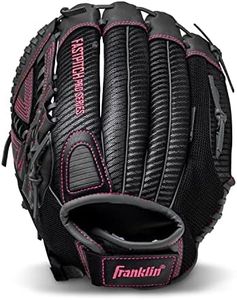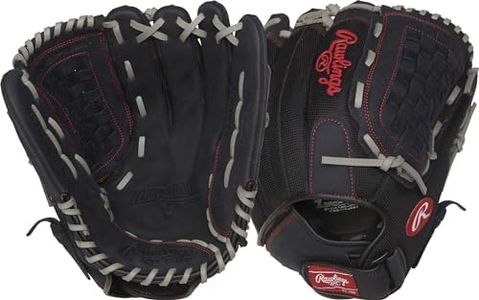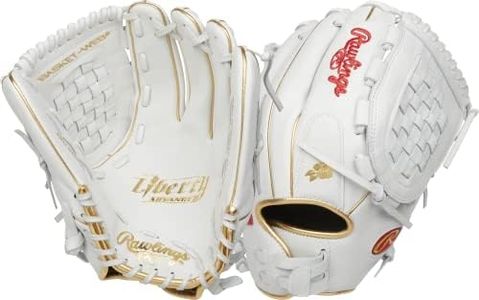We Use CookiesWe use cookies to enhance the security, performance,
functionality and for analytical and promotional activities. By continuing to browse this site you
are agreeing to our privacy policy
10 Best Softball Gloves
From leading brands and best sellers available on the web.Buying Guide for the Best Softball Gloves
Choosing the right softball glove is essential because it directly affects how comfortable you feel on the field and how well you can catch and control the ball. The glove should fit your hand comfortably and be tailored for your usual playing position to help you perform your best. Considering a few key factors will help you narrow down your options and make sure you end up with a glove that supports your game.Glove SizeGlove size refers to the measurement, usually in inches, from the top of the index finger to the heel of the glove. It's important because the right size gives you control and comfort, while the wrong size can either slow you down or make it difficult to catch. Youth sizes are smaller, ideal for younger players or those with smaller hands, generally ranging from about 9 to 12 inches. Adult gloves typically start at 12 inches and go up to around 15 inches. Infielders tend to choose smaller gloves for quick ball transfers, while outfielders prefer larger gloves for a greater catching area. Pick a glove that matches your hand size and your playing position.
Webbing StyleThe webbing is the part between the thumb and index finger, and it affects how you catch and release the ball. There are many web styles, but they can be divided into open webs and closed webs. Open webs allow dirt to fall through easily, which is good for infielders who need to quickly grab the ball. Closed webs provide extra support and are better for pitchers who want to hide their grip or outfielders who catch high fly balls. Choose a webbing style that suits the demands of your primary position.
MaterialSoftball gloves are usually made from various types of leather or synthetic materials. Leather gloves are more durable and offer better performance, but require break-in time and can be heavier. Synthetic gloves are lighter, cheaper, and easier to break in but may not last as long. Full-grain and steerhide leather are the most durable, while cowhide is softer and easier to use right away. Pick a material that matches your level of play and your comfort preference—leather for advanced players and longevity, synthetic for beginners or lighter weight.
Pocket DepthThe pocket is the indentation in the glove where the ball rests. Deep pockets are better for outfielders, making it easier to secure fly balls, while shallow pockets benefit infielders who need to quickly get the ball out for throws. Pitchers often go for a medium depth that can hide the ball but still allow for fast transfers. Think about your playing position—if you need fast exchanges, a shallower pocket helps; for catching security, a deeper pocket is best.
Fit and FeelFit and feel refer to how the glove sits on your hand and how comfortable it is during play. Some gloves have adjustable wrist straps or special linings for extra comfort. The best glove for you should feel snug but not tight, and you should be able to comfortably open and close it. Everyone’s hands are different, so trying one on (if possible) or choosing a glove with good adjustability can make a significant difference in performance and comfort. Your glove should feel like an extension of your hand.
